#Akkadians
Text
The Anunnaki Conspiracy
The ancient Sumerians, Akkadians, Assyrians, and Babylonians worshipped what they called "the Anunnaki", but who were the Anunnaki really? According to one conspiracy theory, the Anunnaki were an alien race of refugees escaping their own planet to mine for gold and other precious metals on Earth. Did the Anunnaki enslave humans to build the pyramids and other ancient landmarks? You be the judge.
#The Anunnaki Conspiracy#Let's Get Haunted#Anunnaki#Sumerians#Akkadians#Assyrians#Babylonians#Spotify
5 notes
·
View notes
Text
Nineveh was Jacksonville, Florida
Nineveh was Jacksonville, Florida
Nineveh was Jacksonville, Florida was first reveled to me by Neophyte Dag on YouTube from his video, entitled, “The Black Messiah Prince Lewis and the Black 144,000 Saints Elect part 3: https://www.youtube.com/watch?v=nWWxZaQAe6g.
The above video shows you map comparisons of the State of Florida to Assyria and Babylon. In this post is the same map comparison for your own viewing convenience. As…

View On WordPress
#Abyssinia#Acadia#Acadians#advanced ancient civilization#advanced ancient technology#Advanced Technology#Akkad#Akkadians#Amurru#Ancient Egypt#Ancient Mesopotamia#Ancient Turkey#Assyria#Assyrian Empire#Babylon#Ethiopia Superior#Euphrates River#free energy#Gulf of Mexico#History of Jacksonville#India Superior#Kush#La floridas#La Louisiana#Map of Carolana#Mediterranean Sea#Mississippi Mound Builders#Mississippi River#Moors#Nile River
4 notes
·
View notes
Link

The Gutians arrived in the central Zagros Mountain range of Mesopotamia in the last few centuries of the third millennium BC to raid and disrupt.
#history#historyfiles#ancient history#gutians#mesopotamia#ancient mesopotamia#sumer#sumerians#akkadians#iraq#iraq history#zagros mountains
2 notes
·
View notes
Text

Down a Rabbit Hole I Went
I screwed up. I didn't think that using an ancient language on a piece of tumblr merch was necessary but I forgot what site I was on :) . This is tumblr, of course it has to be in linguistically accurate cuneiform.
I went and hired an expert on Ancient Semitic Languages and Cultures. There aren't as many as you'd think that are willing to translate text for an internet gag so I'm so happy I found Paul.

Notes on the translation from the translator:
I used the ventive suffix on the imperative "give (rib+am)" which is a special feature of Akkadian that indicates the motion of direction. It makes it a little bit more authentic. The longer version actually includes the words "to me (ana iasim)", but a typical Akkadian speaker probably wouldn't have needed to say that.
Also, for the word "money" I used the Sumerian (KUG.BABBAR) instead of spelling out the Akkadian, because that was a common feature in Akkadian scribal writing.
For the font I was happily surprised that Google has a Cuneiform font, so not only is it correct but it looks pretty neat too.
Right now you can buy both versions in the shop but cuneiform version won't ship for a week or so as I have to order new stock with the new design.
22K notes
·
View notes
Text





PAINLAND WEEK - DAY TWO - MYTHS/LEGENDS
→ Sophus Helle, Gilgamesh — tablet XII, lines 87-95
#dead boy detectives#painlandweek#payneland#dbda#charles rowland#edwin payne#jayden revri#george rexstrew#dbdagifs#mygifs#dbdaedits#myedits#dbda and gilgamesh#if there's any babylonian scholars in the fandom#im sorry i tried my utmost best#my linguistics degree did not entirely prepare me for this#i did hours of research for this and i'm not even sure the cuneiform is right#because i could not find any visual documentations of these lines on tablet xii#and so i was relying on a.r. george's 2003 'the babylonian gilgamesh epic'#along with an akkadian dictionary and ePSD#and even then i'm not sure i have the right characters
694 notes
·
View notes
Text
Something that I get chills about is the fact that the oldest story told made by the oldest civilization opens with "In those days, in those distant days, in those ancient nights."
This confirms that there is a civilization older than the Sumerians that we have yet to find
Some people get existential dread from this
Me? I think it's fucking awesome it shows just how much of this world we have yet to discover and that is just fascinating
#the epic of gilgamesh#gilgamesh#enkidu#sumerian#ancient history#world history#history#ancient sumeria#sumeria#ancient times#ancient civilizations#bronze age#ancient literature#ancient legends#mesopotamia#ancient mesopotamia#akkadian#mythology#sumerian mythology#mesopotamian mythology#mesopotamian#ancient mystery#ancient myths#ancient mythology#ancient myth#ancient legend#ancient myths and legends#ancient past#epic of gilgamesh#ancient epic
2K notes
·
View notes
Text

Gold and lapis lazuli cylinder seal, Akkadian, circa 2200-2100 BC
from The British Museum
1K notes
·
View notes
Text


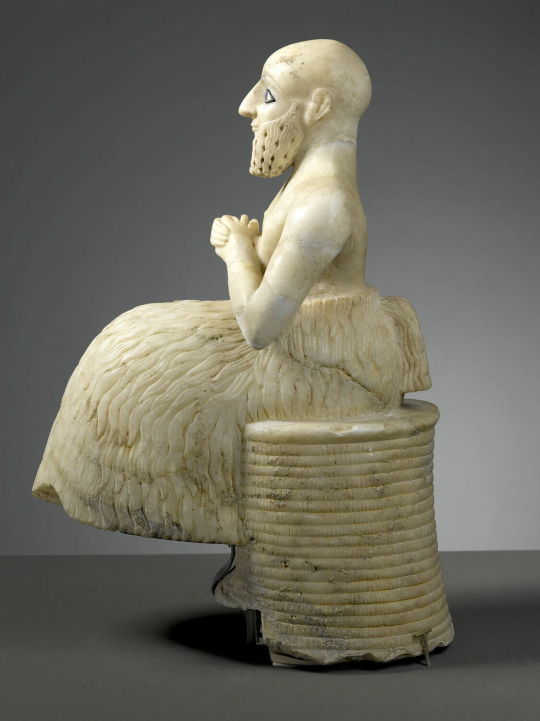
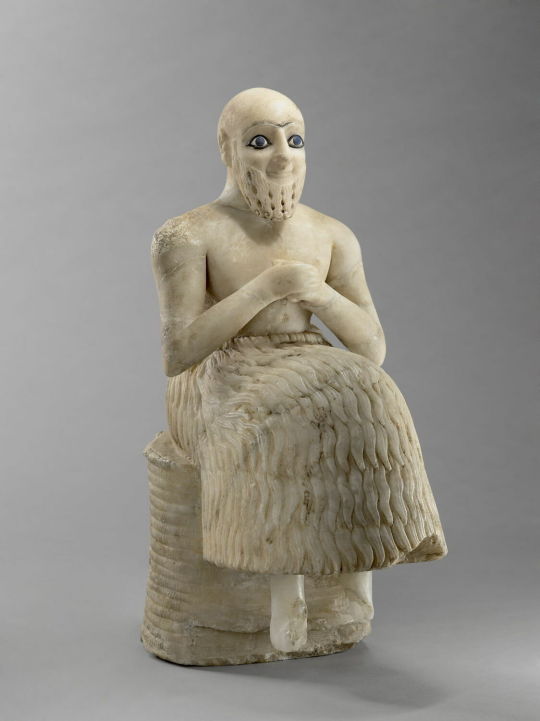

~ Statue of the intendant Ebih-Il.
Place of discovery: Mari temple of Ishtar courtyard 20
Date: 2500-2340 B.C.
Period: Archaic dynasty IIIB
Medium: Alabaster, shell, lapis lazuli, bitumen
▪︎ Inscription/Dedication (in Akkadian): "Statue of Ebih-Il, the Steward, to Ishtar he dedicated it".
#ancient#ancient art#history#museum#archeology#ancient sculpture#ancient history#archaeology#assyria#akkadian#statue of intendant#mari temple of Ishtar#Ebih-Il#praying#dedication#2500 b.c.#2340 b.c.
1K notes
·
View notes
Text
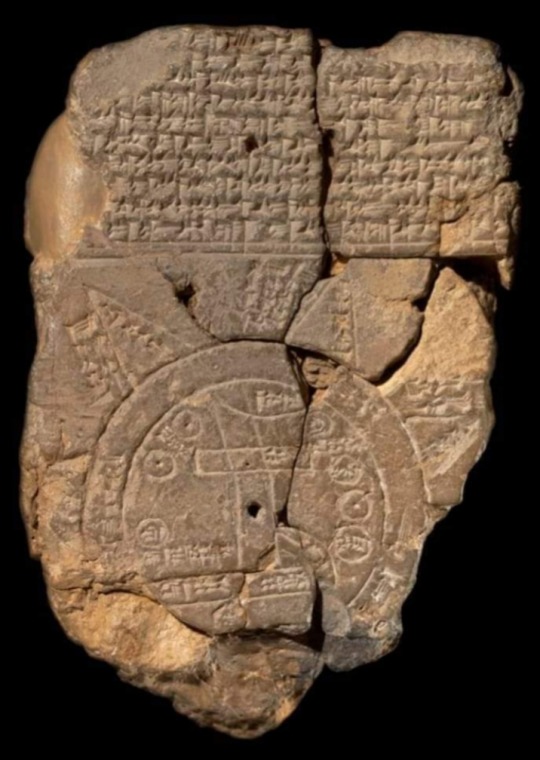
Babylonian Map of the World (6th century BC), also known as Imago Mundi, is oldest clay tablet map written in Akkadian.
The tablet describes the oldest known depiction of the known world.
It was discovered at Sippar, southern Iraq, 60 miles north of Babylon on east bank of Euphrates River.
This map not only serves as a historical record of the region's geography but also includes mythological elements, providing a comprehensive view of the ancient Babylonian worldview.
Today, the Babylonian Map of the World is housed in the British Museum, where it continues to be a valuable artifact for understanding the ancient past.
Details of the map:
1. “Mountain” (Akkadian:šá-du-ú)
2. “City” (Akkadian: uru)
3. Urartu (Armenia) (Akkadian: ú-ra-áš-tu)
4. Assyria (Akkadian: kuraš+šurki)
5. Der (Akkadian: dēr)
6. Swamp (Akkadian: ap–pa–ru)
7. Elam (Akkadian: šuša)
8. Canal (Akkadian: bit-qu)
9. Bit Yakin (Akkadian:bῑt-ia-᾿-ki-nu)
10. “City” (Akkadian: uru)
11. Habban (Akkadian: ha-ab-ban)
12. Babylon (Akkadian: tin.tirki), divided by Euphrates
13. Ocean (salt water, Akkadian:idmar-ra-tum)
#Babylonian Map of the World#Imago Mundi#clay tablet map#clay tablet#Akkadian#Sippar#Iraq#British Museum#history#mythology#map#Archaeo Histories#Ancient Babylon#Babylonia#geography#artifact
540 notes
·
View notes
Note
Hello! I have a deep interest in mesopotamian history and linguistics. I am not a professional at all, however. It is just a hobby of mine. I wanted to know if you were aware of any dictionaries for akkadian words (preferably online resources) that are reliable. When I search "akkadian dictionary" this website is the first to appear: https://www.assyrianlanguages.org/akkadian/index_en.php
However, I am not sure how reliable it is because it does not have a clear author/authors or credentials. Would you happen to know anything about it? And if there are other resources, could you please link them?
Thank you!
Hello! That dictionary is handy for quick lookup, but as you say, I don't know where they're getting the information from, so I would be a bit dubious. The sine qua non of Akkadian dictionaries is available for free online: the Assyrian Dictionary of the Oriental Institute of the University of Chicago (CAD). Unfortunately, it's available only as PDFs for each initial letter, and the older letters are poorly OCRed, so searching it can be tedious and manual.
A good in-between option is the Concise Dictionary of Akkadian (CDA), available as a PDF here.
Best of luck with your studies!
78 notes
·
View notes
Text
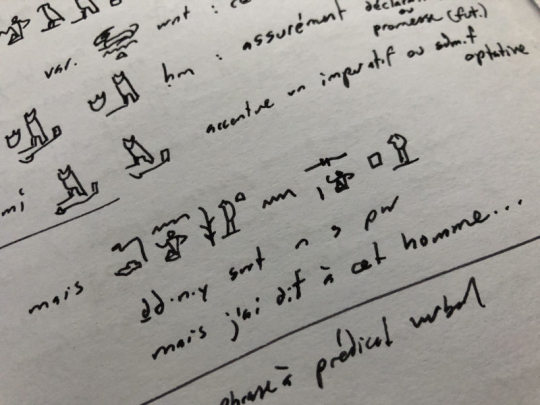
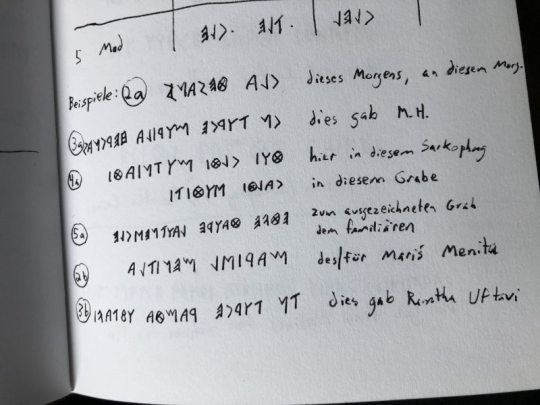




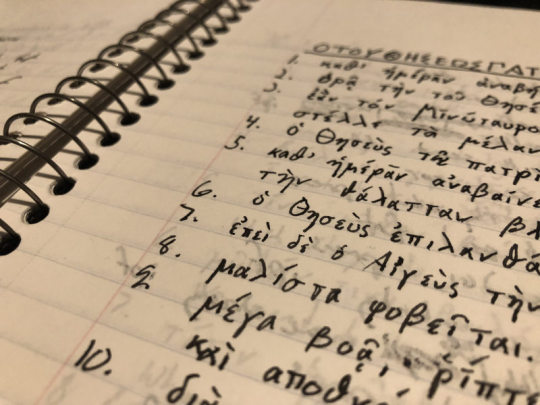

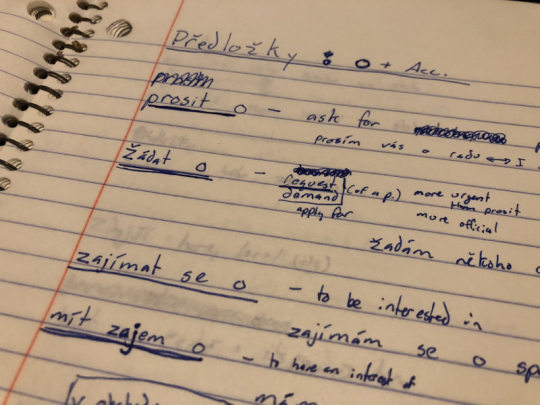
notes (detail)
#dark academia#chaotic academia#grey academia#classic academia#classical studies#studies#studyblr#ancient languages#lingua latina#etruscan#akkadian#ancient greek#czech#ἐποίησα
89 notes
·
View notes
Text
Shoutout to the guy writing the sumerian king list, who says of the period just after the fall of the Akkadian empire "Who is King? Who is not King?"
Historians and archaeologists for all eternity feel your pain
#ancient history#memes#tagamemnon#ancient history memes#mesopotamia#ancient sumeria#akkadian#bronze age
104 notes
·
View notes
Text

The linguist
#syntaxpod#syntax podcast#audio drama#this took me 20 hours#also theoretically thats actual akkadian but i have no clue what it says#art#artists on tumblr#my art#kal.txt#syntax pod#podcast
38 notes
·
View notes
Note
Hi! I’ve been trying to find a good cuneiform version of the Epic of Gilgamesh and have been completely unsuccessful (mostly because I’m not interested in buying one, just finding one online or at the library). Regardless, all I’m trying to find is the cuneiform for a couple of lines early in Tablet 1: in Mitchell’s English version, “Take out the tablet of lapis lazuli. Read/how Gilgamesh suffered and accomplished all.” (p.70) I was wondering if you could help me out with this in any possible?
Hello! I don't have the cuneiform but can maybe help you on your way. These lines are ll. 26-28 of tablet I in the Standard Babylonian version. George translates them as "[Open] the lid of its secret, [lift] up the tablet of lapis lazuli and read out / all the misfortunes, all that Gilgamesh went through!" Helle (2021) opts for "Open the door to its secrets, / take up the tablet of lapis lazuli and read aloud: / read of all that Gilgamesh went through, / read of all his suffering."
The Akkadian for this is
[pi-te-m]a bāba(ka2) ša2 ni-ṣir-ti-šu2
[i-š]i ma ṭup-pi {na4}-uqnî(za-gin) ši-tas-si
[mim-m]u-u2 {dingir}-Giš-gim2-maš ittallaku(du-du)-{ku} ka-lu mar-ṣa-a-ti
The portions not in italics in (parenthesis) are the sign form of the prior word, while those in {brackets} are written determiners; neither are spoken aloud. [Square brackets] are fragmentary and are assumed. This means the pronunciation would be Pitema bāba ša niṣirtišu / Iši ma ṭuppi uqnî šitassi / Mimmu Gišgimmaš ittallaku kalu marṣāti (or something close to it, my Akkadian isn't great so forgive any errors!)
Unfortunately there's no actual cuneiform copy of the tablet I can find online, but if an Akkadianist reading this can help with the exact signs I'm sure the asker would appreciate it!
70 notes
·
View notes
Text
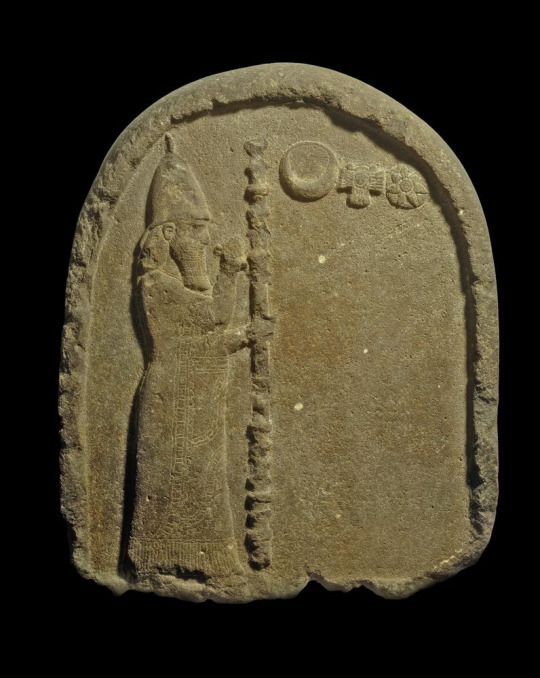

Babylonian Stele of Nabonidus before Moon, Sun, and Venus
c. 545 BCE
Babylon, Iraq (?)
British Museum #90837
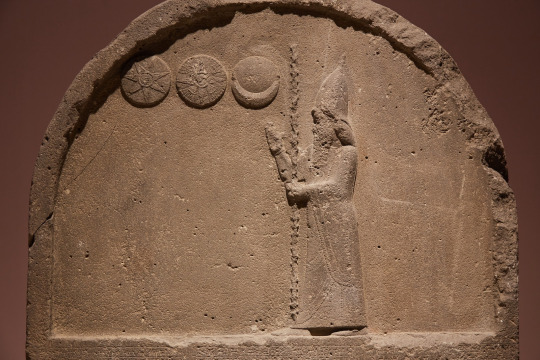

Harranian Stele of Nabonidus before Moon, Sun, and Venus
c. 545 BCE
Harran, Turkey
Şanlıurfa Museum, Urfa, Turkey
#harran#babylon#assyria#assyrian gods#babylonian gods#sumer#sumerian gods#akkad#akkadian gods#nabonidus#shamash#ishtar#sin#venus#moon#sun#winged sun#horned sun#crescent#star#astrogram#heptagram#astrology#pagan gods#polytheism#archeology#magic#witchcraft#witchblr#paganblr
272 notes
·
View notes